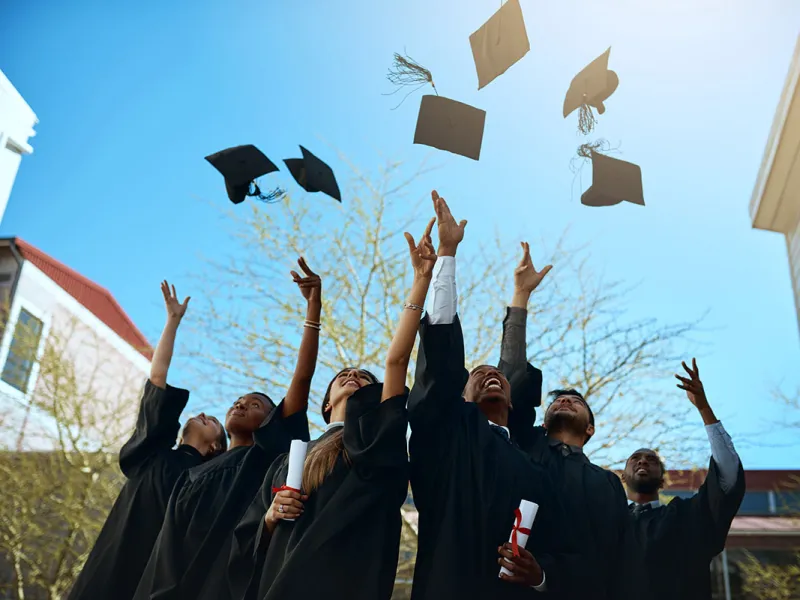By Rashad Grove
The formation of Historically Black Colleges and Universities (HBCUs) has been critical to the development of Black life in America. Alongside houses of worship and business entities, HBCUs are some of the oldest institutions perpetually owned and managed by African Americans.
As defined by the Thurgood Marshall Fund, HBCUs were “established in the United States early in the 19th century, to provide undergraduate and graduate level educational opportunities to people of African descent.
According to the Higher Education Act of 1965, “HBCUs are …any historically black college or university that was established prior to 1964, whose principal mission was, and is, the education of black Americans, and that is accredited by a nationally recognized accrediting agency or association determined by the Secretary [of Education].”
Currently, there are 101 (HBCUs) across the country and nine percent of all African American college students attend HBCUs.
While the majority of HBCUs are in the South, the first HBCUs were established in Pennsylvania. Cheyney University of Pennsylvania originated as a school for children established by Quakers in Philadelphia in 1837.
The Ashmun Institute, also outside Philadelphia, offered theological training and basic education from when it was founded in 1854. Eventually, it became Lincoln University in 1866 in honor of President Abraham Lincoln after his assassination. Lincoln is also recognized as the first college-degree-granting HBCU in the country.
Originally, HBCUs were established as training centers for teachers, aspiring clergy, and agricultural vocations. At the turn of the 20th century, several HBCUs began to develop and create their pedagogical scholarship. Academic conferences and scholastic journals showcased the diversity of Black intellectual thought. Such notable figures as W.E.B. Du Bois, Ida B. Wells, Booker T. Washington, Howard Thurman, Mordecai Johnson, E. Franklin Frazier, Thurgood Marshall, and Martin Luther King Jr. attended and/or taught at HBCUs. The great educator Mary McLeod Bethune launched a private school for Black girls which later became Bethune-Cookman University.
One of the great hallmarks of HBCUs is the National Pan-Hellenic Council, more commonly known as The Divine Nine. Consisting of Alpha Kappa Alpha Sorority, Inc., Kappa Alpha Psi, Fraternity, Inc., Omega Psi Phi, Fraternity, Inc., Delta Sigma Theta Sorority, Inc., Zeta Phi Beta Sorority, Inc., Alpha Phi Alpha, Fraternity, Inc., Phi Beta Sigma, Fraternity, Inc., Sigma Gamma Rho Sorority, Inc., and Iota Phi Theta, Fraternity, Inc., each organization embodies Black excellence and the spirit of HBCUs. While not every sorority and fraternity was established on the grounds of a historically Black college and university, each organization expanded because of HBCUs.
Along with academics and culture, HBCUs have long been spaces for the cultivation of Black athletic excellence. From rivalries such as Grambling State University vs. Southern University and Howard University vs. Hampton University, collegiate sports have always been a hallmark of HBCUs. Until the Southern Eastern Conference (SEC) finally broke the color barrier and admitted Black students, HBCUs were the pipeline of their talent to the NBA and NFL.
In the NFL, some of the greatest football players of all time got their start at HBCUs. Walter Payton (Jackson State), Jerry Rice (Mississippi Valley State), Deacon Jones (Mississippi Valley State), Shannon Sharpe (Savannah State), Michael Strahan (Texas Southern), and John Stallworth (Alabama A&M) were just some of the Pro Football Hall of Famers who first excelled at HBCUs.
In the NBA, players hailed from HBCUs as well, Earl “The Pearl” Monroe (Winston Salem State University), Dick Barnett (Tennessee State University), Sam Jones (North Carolina Central, Earl Lloyd (West Virginia State), Ben Wallace (Virginia Union), and Willis Reed (Grambling). Also, John B. McLendon (North Carolina Central), Charlaine Vivian Stringer (Cheyney), Clarence “Big House” Gaines (Winston-Salem State), and Alvin Attles (North Carolina A&T) are coaches who are Hall-of-Famers.
Sonja O. Stills, Commissioner of the Mid-Eastern Athletic Conference (MEAC), spoke about the rich legacy of HBCU sports.
“To me, HBCU sports represent far more than just competition. They embody the rich tapestry of Black culture—from the energy of the marching bands and cheerleaders to the distinctive fashion and traditions that make our institutions unique,” Stills said. “Attending an HBCU means becoming part of a family built on heritage, pride, and resilience. Historically, HBCUs were founded to provide educational opportunities to underserved communities, and today, they continue to produce an impressive number of Black doctors, lawyers, engineers, and leaders, as well as world-class athletes—all while facing systemic underfunding. As I always say, you can go anywhere from an HBCU, whether that be professional sports or Corporate America.”
Candice Marie Benbow, author of Red Lip Theology and Public Theologian and graduate of Tennessee State University ‘04 and North Carolina Central University ‘09, shared with BET.com how HBCUs are spaces where the beauty of Blackness is cultivated and experienced.
“There is no place where young Black adults are able to grow and thrive quite like the HBCU. There, students are enveloped in a cocoon that reinforces their potential and greatness,” Benbow said.
“In a world that seeks to root out Black excellence, HBCUs become safe harbors and sanctuaries. On these campuses, they are able to forge towards adulthood and self-sufficiency with the space to make memories that are relived every Homecoming all while becoming part of a legacy of leaders and thinkers who shaped our communities and the world,” she continued.
As the American project continues to evolve and Black contributions are ignored, disregarded, or downplayed, HBCUs will persist in playing a pivotal role in shaping the next generation of prolific Black artists, athletes, academics, and activists.

